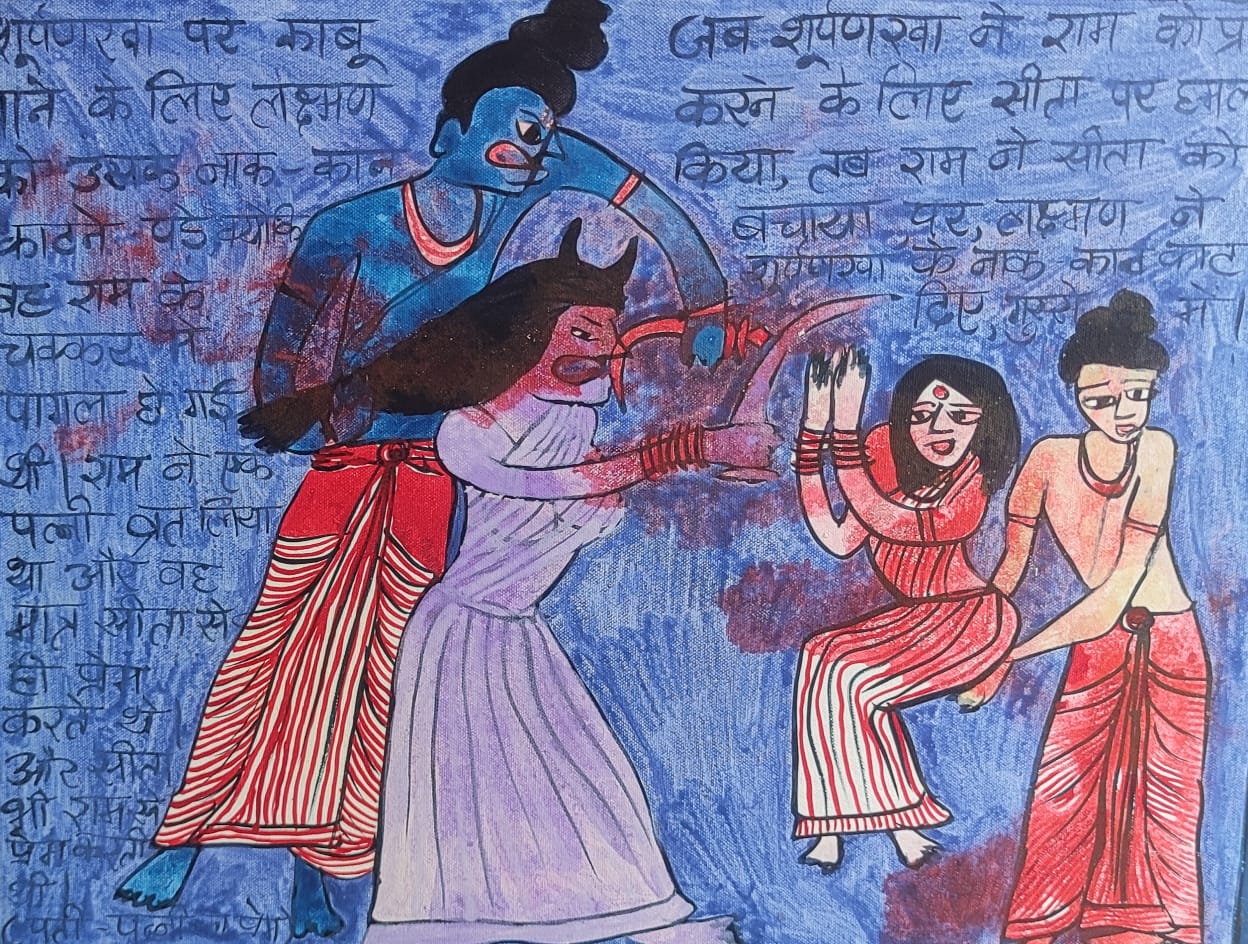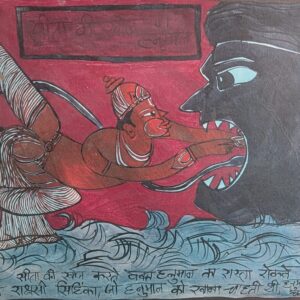“Shurpanakha ki Kati Naak” – A Visual Satire of Ego and Consequence by Rounak Rai
In his painting “Shurpanakha ki Kati Naak”, artist Rounak Rai boldly reinterprets one of the most iconic and controversial episodes from the Ramayana—the moment when Lakshman, at Ram’s command, cuts off the nose and ears of Shurpanakha, Ravana’s sister. But true to Rai’s deeply expressive and layered style, this is not merely a scene of violence—it is a complex tableau of ego, rejection, rage, and moral ambiguity.
—
Scene Analysis:
At the center, Shurpanakha, with a grotesquely exaggerated mouth and dramatic posture, becomes a symbol of wounded pride and female rage. Her arms flail in protest and pain as blood red lines trail from her face, emphasizing both literal and symbolic mutilation.
Lakshman, seen here pulling Sita protectively, holds a raised knife-like gesture, his stance firm but morally tense.
Ram, muscular and composed, restrains the demoness with one hand and takes charge of the situation with calm authority.
Sita, though often silent in most versions of this event, is given central emotional presence in Rai’s work—shown in active motion and alarm, reinforcing the theme of unspoken vulnerability and protection.
The background is bathed in shades of blue and crimson, creating a surreal battlefield between desire and dharma, attraction and boundary.
—
Text Integration:
Rai includes a large swathe of handwritten Hindi narrative, taken directly from epic verses but phrased in a colloquial, almost street-theatre style:
> “जब शूर्पणखा ने राम को प्राप्त करने के लिए सीता पर हमला किया… तब राम ने सीता को बचाया। लक्ष्मण ने शूर्पणखा की नाक काट दी…”
This textual storytelling is a hallmark of Rai’s method—transforming his paintings into visual scrolls or modern-day folk epics, where image and word merge to engage viewers more directly, almost theatrically.
—
Rounak Rai’s Signature Touch:
Bold red and white lines, especially in garments and wounds, signify emotion, conflict, and cultural identity.
The naive-yet-expressive figures recall traditional Indian folk art (like Madhubani and Kalighat), but Rai elevates them through psychological complexity and narrative irony.
The moment of action is frozen with almost comic exaggeration, but the satirical edge cuts deep—it invites us to question ideas of beauty, rejection, and punishment.
—
Conclusion:
In “Shurpanakha ki Kati Naak”, Rounak Rai doesn’t just depict a mythic punishment—he opens a conversation on gender, power, rejection, and the consequences of unchecked desire. With his contemporary-folk fusion and biting visual clarity, Rai once again turns an ancient epic into a mirror of the human psyche, forcing the viewer to feel, question, and reflect.




Reviews
There are no reviews yet.